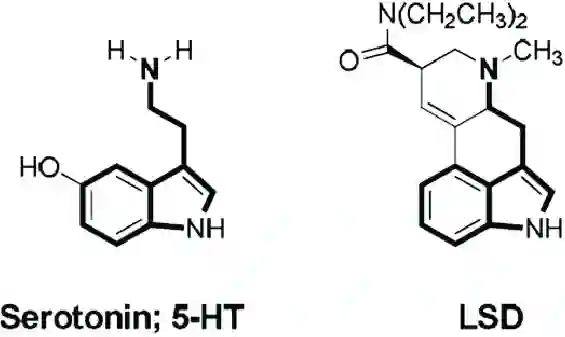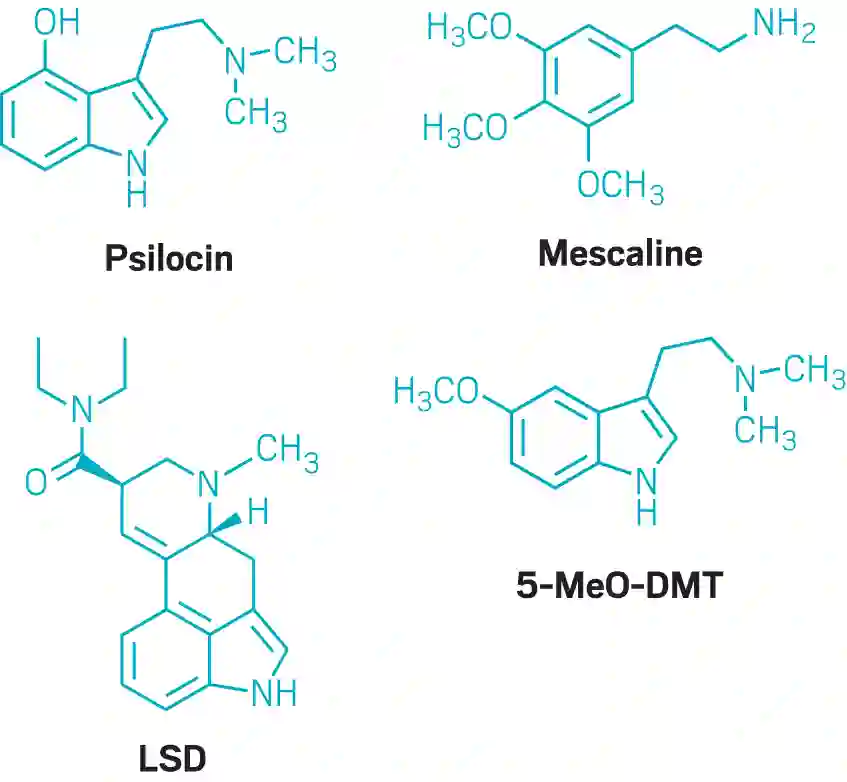Uncategorized
Serotonergic Psychedelics: Chemical Makeup, Effects, and Legal Status
Serotonergic psychedelics are a class of compounds that temporarily modify information transfer in humans, leading to altered states of consciousness and perceptual experiences. These compounds are also known as classic hallucinogens and have been used for centuries in various cultural and spiritual practices. Recent research has shown promising results for their potential therapeutic applications in the treatment of mental health conditions such as depression, anxiety, and addiction. However, there are also concerns regarding their potential for misuse and abuse.
What are Serotonergic Psychedelics?
Serotonergic psychedelics are compounds that affect the serotonin system in the brain. These compounds include lysergic acid diethylamide (LSD), psilocybin, and dimethyltryptamine (DMT), among others. They are chemically similar to serotonin, a neurotransmitter that regulates mood, appetite, and sleep, among other functions. Serotonergic psychedelics bind to serotonin receptors in the brain, leading to altered states of consciousness and perceptual experiences.
Chemical Makeup of Serotonergic Psychedelics
Serotonergic psychedelics have a unique chemical makeup that distinguishes them from other psychoactive substances. They all contain a tryptamine backbone and a substituted indole ring, which is responsible for their psychedelic effects. Some of the common serotonergic psychedelics and their chemical structures include:
-
LSD (lysergic acid diethylamide): This compound has a complex chemical structure that includes a lysergic acid molecule and an ethylamide group.
-
Psilocybin: This compound is found in certain species of mushrooms and is converted to psilocin in the body. Psilocin has a similar chemical structure to serotonin.
-
DMT (dimethyltryptamine): This compound is found in certain plants and is also produced by the human body. It has a similar chemical structure to serotonin and is rapidly metabolized in the body.
Effects of Serotonergic Psychedelics
The effects of serotonergic psychedelics are highly subjective and can vary greatly depending on the individual, the dose, the setting, and other factors. However, some of the common effects of these compounds include:
- Altered perception of time, space, and self
- Intense sensory experiences, such as visual and auditory hallucinations
- Changes in mood and emotion, ranging from euphoria to fear and anxiety
- Enhanced creativity and problem-solving abilities
- Increased spiritual and mystical experiences
Therapeutic Potential of Serotonergic Psychedelics
Recent research has shown promising results for the potential therapeutic applications of serotonergic psychedelics in the treatment of various mental health conditions, including:
- Depression
- Anxiety
- Addiction
- End-of-life anxiety in individuals with terminal illnesses
The therapeutic effects of serotonergic psychedelics may be related to their ability to enhance emotional insight and reduce the symptoms of various mental health conditions. However, more research is needed to better understand the mechanisms behind these effects and to develop standardized dosing and administration protocols.

Concerns Regarding Serotonergic Psychedelics
Despite the potential therapeutic benefits of serotonergic psychedelics, there are also concerns regarding their use, including:
-
Potential for substance use disorder: Some individuals may be at risk of developing substance use disorder or experiencing adverse effects with long-term or frequent use of serotonergic psychedelics.
-
Personality and mental health: Serotonergic psychedelics can temporarily modify an individual’s personality and mental health, which can lead to negative experiences or long-term effects.
-
Legal status: Serotonergic psychedelics are classified as
Serotonergic Psychedelics Substance Use Disorder
While the use of serotonergic psychedelics has been explored for its potential therapeutic benefits, there is also the risk of substance use disorder. In a study published in the Journal of Psychopharmacology, researchers found that individuals who reported using serotonergic psychedelics had a higher likelihood of experiencing substance use disorder. However, it is important to note that this study was limited by self-reported drug use and did not account for other factors that could influence the development of substance use disorder.
Serotonergic Psychedelics and Personality
Some researchers have suggested that the use of serotonergic psychedelics could have long-lasting effects on personality traits, such as openness and creativity. In a study published in the Journal of Psychopharmacology, researchers found that individuals who reported using serotonergic psychedelics had significantly higher levels of openness than those who had never used these substances. However, it is important to note that this study was limited by self-reported drug use and did not account for other factors that could influence personality traits.
Serotonergic Psychedelics Chemical Makeup
Serotonergic psychedelics are a class of drugs that share a similar chemical makeup, which is characterized by the presence of the neurotransmitter serotonin. This neurotransmitter plays a key role in the regulation of mood, appetite, and sleep, among other functions. The chemical structure of serotonergic psychedelics allows them to temporarily modify information transfer in humans, leading to altered states of consciousness and perceptual experiences.
Serotonergic Psychedelics Legal Status
The legal status of serotonergic psychedelics varies around the world. In the United States, for example, the use of serotonergic psychedelics is illegal under federal law. However, some states and cities have decriminalized the use of these substances or made them available for medical research. In other countries, such as the Netherlands and Portugal, the use of serotonergic psychedelics is legal under certain conditions.
Serotonergic Psychedelics List
There are several different types of serotonergic psychedelics, including:
- LSD (lysergic acid diethylamide)
- psilocybin (found in “magic mushrooms”)
- DMT (N,N-dimethyltryptamine)
- mescaline (found in peyote cactus)
Serotonergic Psychedelics Temporarily Modify Information Transfer in Humans
Serotonergic psychedelics temporarily modify the way that information is transferred in the brain, leading to altered states of consciousness and perceptual experiences. Specifically, these substances bind to serotonin receptors in the brain, which can cause changes in the way that information is processed and transmitted. This can lead to a range of effects, including visual and auditory hallucinations, altered perception of time, and changes in mood and emotional experience.
Serotonergic Psychedelics and Classic Hallucinogens the Same Thing?
Serotonergic psychedelics are often referred to as classic hallucinogens, but there is some debate over whether these terms should be used interchangeably. Some researchers argue that the term “classic hallucinogen” is too broad, as it includes substances that have different chemical structures and modes of action. Others argue that the term “serotonergic psychedelic” is too narrow, as it only includes substances that specifically act on serotonin receptors. Ultimately, the terminology used to describe these substances is a matter of debate and is influenced by the specific research questions being asked.
Conclusion
Serotonergic psychedelics are a class of drugs that have been the subject of significant research in recent years. While these substances have shown promise as a potential treatment for a range of mental health conditions, including depression and PTSD, there are also risks associated



